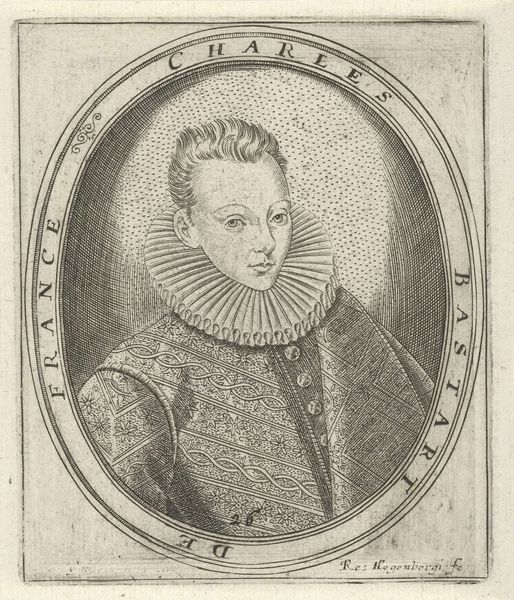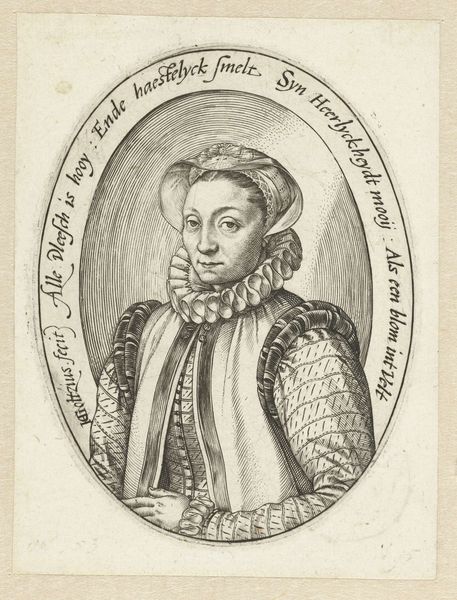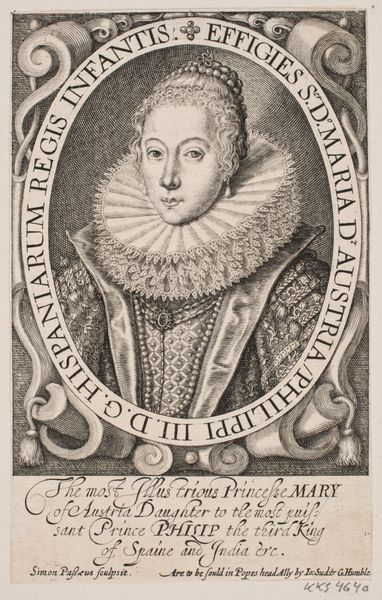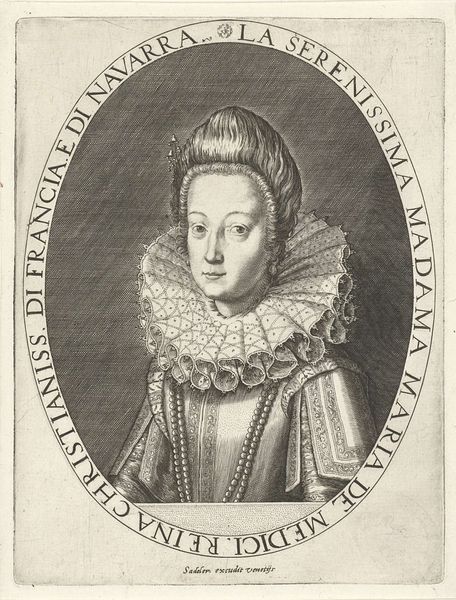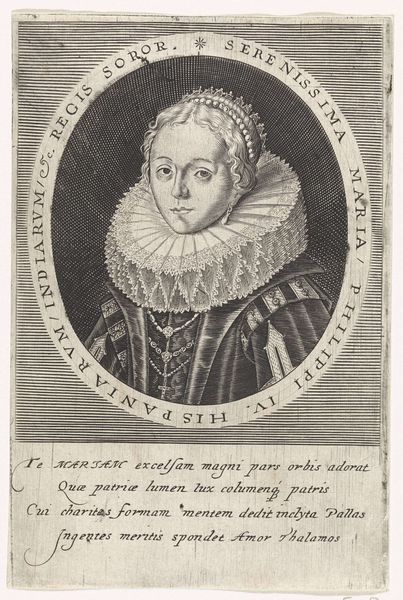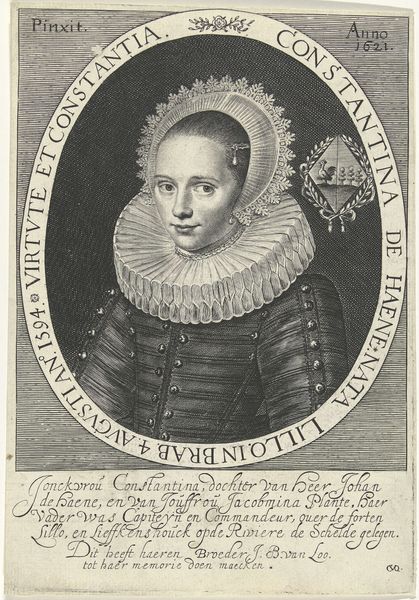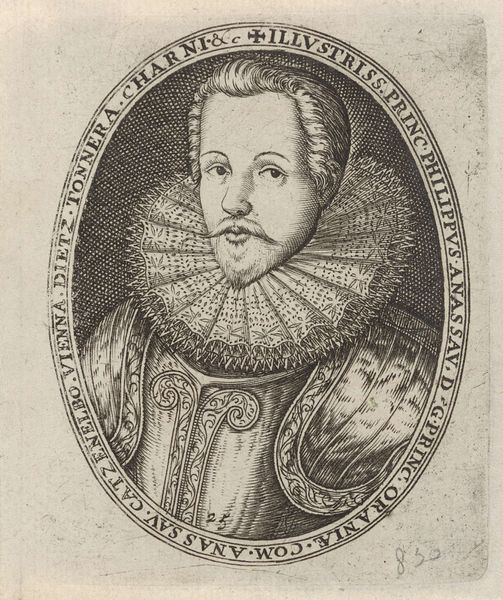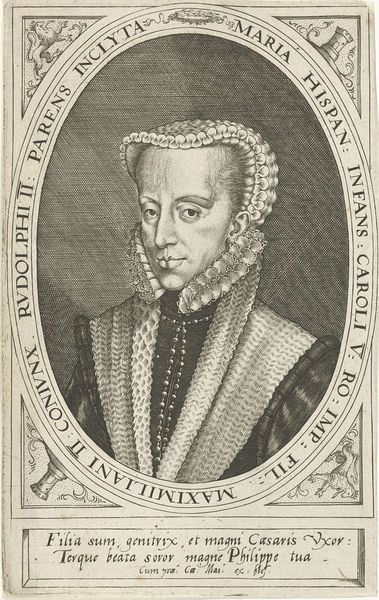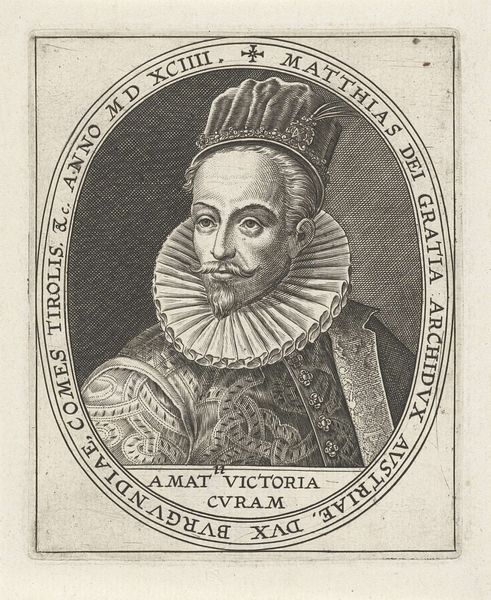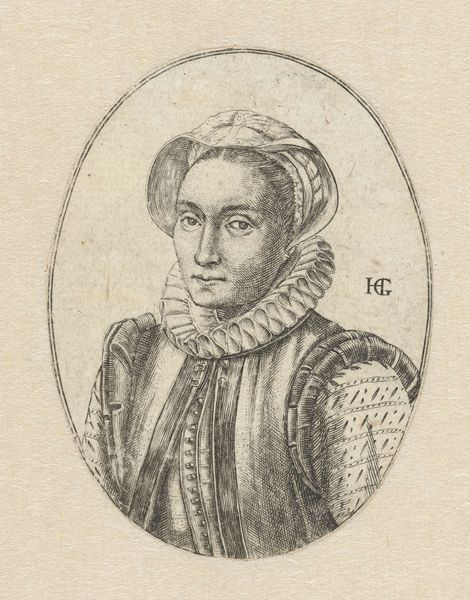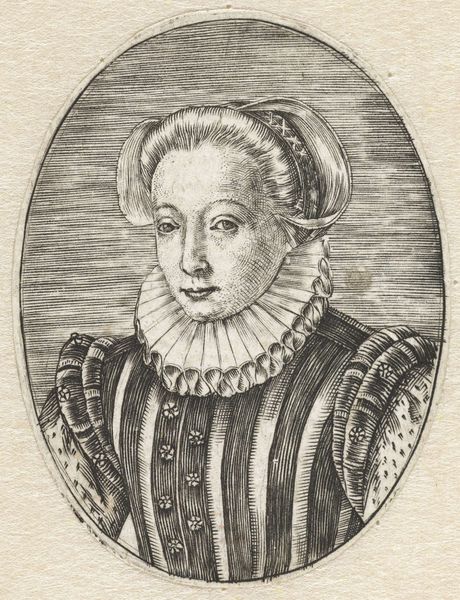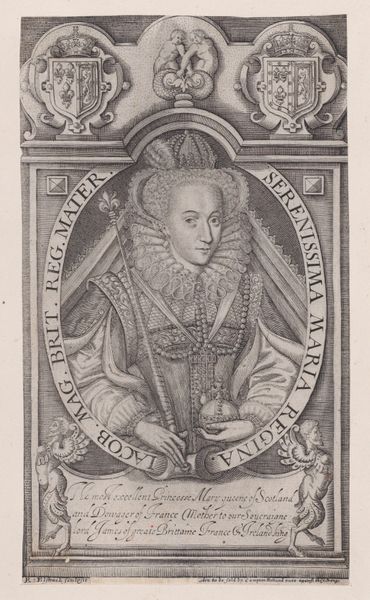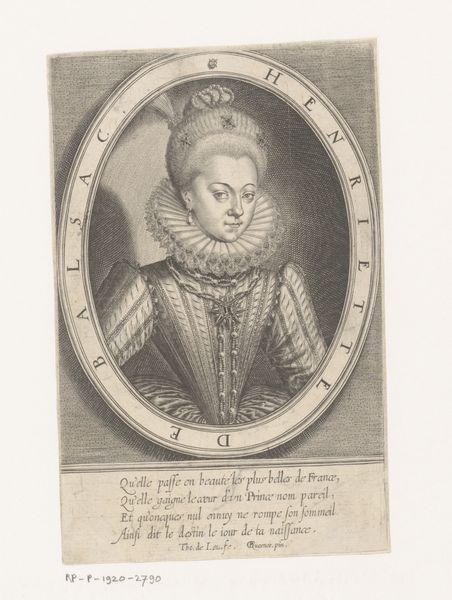
drawing, print, intaglio, paper, engraving
#
portrait
#
drawing
# print
#
intaglio
#
paper
#
northern-renaissance
#
engraving
Dimensions: height 85 mm, width 60 mm
Copyright: Rijks Museum: Open Domain
Editor: So, here we have Johan Wierix's "Portret van de echtgenote van Jan Pilier, op 21-jarige leeftijd," from 1605. It's an engraving, so lines and details seem really important. What strikes me is how this print manages to convey texture, especially in the ruff. How would you approach thinking about this piece? Curator: I am particularly interested in how this portrait highlights the materiality of early 17th-century printmaking and the labor involved in its creation. The medium itself, intaglio on paper, speaks volumes. Consider the social context. Who commissioned it, and why choose print? Was this about creating multiples for wider circulation, thereby broadening the subject's societal presence through commodity production? Editor: That’s a good point. I was only really focused on the visual aspects. Was printmaking considered "art" at the time, or something else? Curator: The distinction between "high art" and craft was much blurrier. Printmaking allowed for the dissemination of imagery to a wider audience, connecting to debates around access, knowledge, and perhaps even nascent forms of celebrity. I am wondering about the choice of text within the frame; how does it emphasize certain values, connecting the woman to prevailing socio-economic structures? The text indicates loyalty, hinting that this woman belonged to and furthered a very defined world. Editor: I hadn't really thought about that. It feels like it brings it all together: materials, production, and what it meant for the sitter and her place in society. Curator: Exactly! Considering the print as a manufactured object within a specific economy reframes how we understand her portrait and its purpose.
Comments
No comments
Be the first to comment and join the conversation on the ultimate creative platform.
